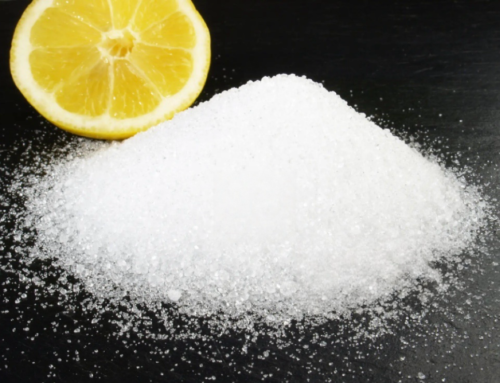 In the world of bread making, one key component responsible for this magic is the bread raising agent. Let’s uncover a solution in the realm of bread making. In this blog, we delve into the wide array of common raising agents employed in bread-making, with special emphasis on phosphate-based leavening agents and blended phosphates. Explore the possibilities and potential that these agents hold for your business. Discover the advantages they offer and gain insights into their applications.
In the world of bread making, one key component responsible for this magic is the bread raising agent. Let’s uncover a solution in the realm of bread making. In this blog, we delve into the wide array of common raising agents employed in bread-making, with special emphasis on phosphate-based leavening agents and blended phosphates. Explore the possibilities and potential that these agents hold for your business. Discover the advantages they offer and gain insights into their applications.
Throughout this blog, we’ll answer key questions:
- What are Phosphate-based Bread Raising Agents?
- How do they differ from common bread raising agents?
- What is the best Bread Raising Agent?
- Are they safe?
But first, let’s start with the basics:
What are Phosphate-based Bread Raising Agents?
When it comes to bread raising agents, we’re all familiar with the usual suspects: yeast, baking powder, and baking soda. But have you considered the benefits of phosphate-based alternatives? Phosphate-based bread raising agents have gained significant popularity in the baking industry for their remarkable leavening capabilities and desirable results. Let’s explore the common types of phosphate-based raising agents that have revolutionized the art of baking.
Sodium Acid Pyrophosphate (SAPP): SAPP is a fast-acting raising agent that reacts with moisture to release carbon dioxide. It is often used in combination with other phosphate-based agents like MCP or DCP to achieve optimal raising effects. SAPP produces quick and reliable rises, resulting in light and airy textures in bread products.
Tetrasodium Pyrophosphate (TSPP): TSPP serves as a buffering agent and stabilizer in bread raising. It helps maintain the pH balance during the baking process, contributing to improved texture and enhanced shelf life. TSPP is often used in combination with other phosphate-based raising agents to create a balanced raising system.
Sodium Aluminum Phosphate (SALP): SALP functions by releasing carbon dioxide gas during the baking process, contributing to the desired rise and texture in bread. It provides a controlled release of carbon dioxide, helping the dough to expand and create air pockets, resulting in a light and airy final product. However, it is important to note that SALP has faced restrictions in certain regions due to concerns regarding aluminum intake.
Monocalcium Phosphate (MCP): MCP acts as an acid source in the raising process. When combined with baking soda, it reacts to release carbon dioxide gas. This gas creates air pockets, causing the dough to rise and resulting in a light and fluffy texture in the final bread product. MCP is versatile and can be used in both fast-acting and slow-acting raising systems.
Dicalcium Phosphate (DCP): DCP functions in conjunction with other acid sources, such as cream of tartar or sodium acid pyrophosphate (SAPP). Together, they release carbon dioxide during baking, providing a controlled and consistent raising action. The controlled release helps create a more uniform texture in the bread, contributing to a desirable crumb structure.
Blended Phosphates: They can maintain the pH balance during baking, additionally, blended phosphates can extend the shelf life of bread products. They also can act as raising agents while also providing other functional properties, such as enhancing dough stability, improving water absorption, and controlling enzymatic activity.
How do They Differ from Common Bread Raising Agents?
Phosphate Bread Raising Agent
Compared to yeast, baking powder, and baking soda, phosphate raising agents offer several advantages:
Efficiency: Phosphate agents provide reliable and predictable results, ensuring consistent quality in bread production.
Improved Moisture Retention: These agents contribute to enhanced moisture retention in baked goods, extending their freshness and shelf life.
pH Regulation: Phosphate-based raising agents act as pH regulators, ensuring optimal conditions for the baking process and promoting desirable chemical reactions that yield superb results.
Controlled Raising: They offer a controlled release of carbon dioxide, resulting in a uniform texture and crumb structure.
Extended Shelf Life: Bread made with phosphate agents has increased freshness and shelf stability.
Enhanced Flavor: Phosphate agents have a neutral taste, allowing other flavors to shine through.
Ease of Use: Phosphate agents are easy to incorporate into bread recipes, simplifying the baking process.
Blended Phosphates Raising Agent
Compared to yeast, baking powder, baking soda, and phosphate-based raising agents, blended phosphates offer several advantages:
Multi-functionality: Blended phosphates combine multiple components, enabling synergistic effects. They improve leavening performance, dough stability, and fermentation time, simplifying formula design and increasing production efficiency.
Dosage Efficiency and Cost Savings: They exhibit higher activity and leavening power, requiring reduced usage compared to single-component phosphate agents. This minimizes raw material consumption, lowers costs, and enhances production efficiency.
Synergistic Effects: The components interact synergistically, enhancing the leavening effect. They promote bubble formation, dough extensibility, and elasticity, resulting in superior dough rising and uniform expansion.
Flexibility: The composition can be adjusted for specific requirements. By modifying proportions, optimal results can be achieved for different dough formulations and process demands.
What is the best Bread Raising Agent?
The best bread raising agent depends on preferences and recipe requirements:
Yeast: Provides excellent flavor and texture through fermentation.
Baking Powder: Offers quick and consistent rises for convenience.
Baking Soda: Reacts with acidity for effective raising.
Phosphate-Based Raising Agents: Provide controlled raising, versatility, and extended shelf life.
The choice depends on desired characteristics and recipe needs.
When faced with a challenging decision, look no further than blended phosphate as the optimal choice. Its exceptional qualities make it the clear winner among raising agents. With its combination of reliability, versatility, and extended shelf life, blended phosphate stands out as the superior option. Whether you seek controlled leavening, improved texture, or enhanced freshness, blended phosphate delivers outstanding results without a shadow of a doubt.
Are They Safe?
Rest assured, all the raising agents mentioned, including yeast, baking powder, baking soda, and phosphate-based agents, are considered safe for consumption when used within recommended levels. These raising agents have undergone rigorous testing and are widely used in the baking industry.
However, it’s important to note that certain phosphate compounds containing aluminum, such as sodium aluminum phosphate (SALP), have raised concerns regarding aluminum intake. Adhering to safety guidelines and regulations is crucial to ensure consumer safety and promote the use of alternative, safer options.
In conclusion, these raising agents offer a range of advantages, including controlled leavening, extended shelf life, enhanced flavor, and ease of use. Blended phosphates further provide multifunctionality, dosage efficiency, synergistic effects, and flexibility. While all the mentioned raising agents, including yeast, baking powder, baking soda, and phosphates, are considered safe when used within recommended levels, it’s essential to adhere to safety guidelines and regulations, particularly concerning phosphate compounds containing aluminum. Embrace the potential of these bread raising agents to elevate your trading business. With our commitment to delivering high-quality phosphate food additives, we are here to support your baking endeavors and help you create unforgettable bread experiences. If any above triggered your interest, feel free to contact us through [email protected].




